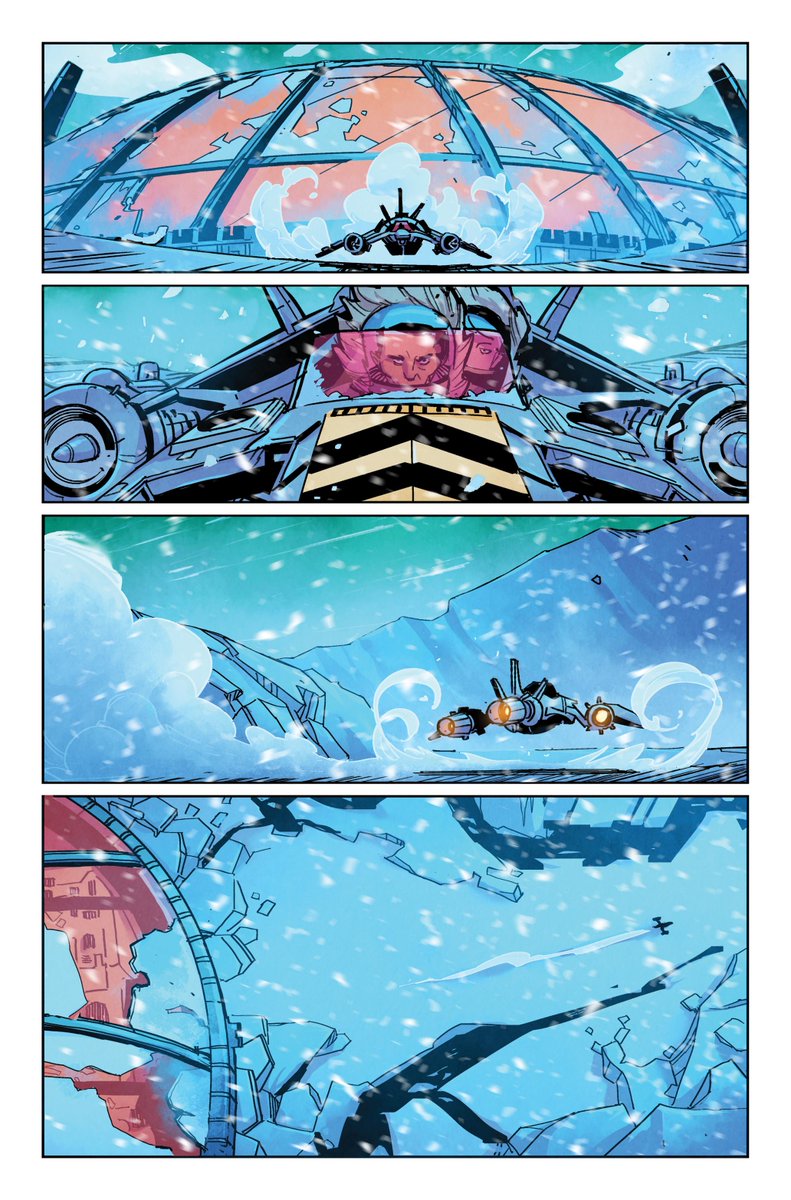ADVANCED REVIEW: Cemetery Beach #1 by Warren Ellis & Jason Howard
Cemetery Beach #1 is due out Sept. 12.
By Zack Quaintance — Right from the start, Cemetery Beach by Warren Ellis and Jason Howard lets you know it’s a wild affair, very much unlike the team’s previous book, Trees. It does this with a set of instructions on the inside cover, starting with: 1. This book is valuable. Do not lose it. Whereas Trees was high concept sci-fi intermingled with commentary on social and cultural issues, Cemetery Beach is high concept sci-fi delivered via raucous adventure, steeped in shock, danger, and lunacy—you know, the good stuff.
The book’s front/inside cover starts establishing all that before readers hit the first panel. On top of that first instruction, there’s more plus also imagery that evokes escape, colonialism, Black Hawk helicopters, and early space travel. When the first panel does arrive, we launch straight into our exposition heavy yet very entertaining opening scene, in which Ellis pens some of his pithiest dialogue in recent memory. We learn in 1920 a group of industrialists and scientists found and operated a method to travel off-world. They built a colony, and our hero is on that colony now doing reconnaissance for Earth...that’s as far into the plot as I need to go here.
As you can see, this book is imaginative. It’s also light by recent Ellis standards, which feels like an odd way to describe a book with this much murder but here we are. The high-concept Ellis ideas are still here, as is the world-building. What sets Cemetery Beach apart from recent Ellis output (think Trees, Karnak, The Wild Storm, etc.) is a lighter energy and gripping plot from our start (more on that soon).
Howard’s artwork is also outstanding, a bit more kinetic than what we saw through much of trees, but just as clear and interesting. This first issue has a necessarily claustrophobic feel through most of it, seeing we start within a Mysterious Torture Shitbox, as our hero puts it. We do get a quick glimpse of the larger world, though, and I’m anxious to see more in future issues when the adventure presumably takes us to new corners of this colony.
The book’s clearest strength, however, is the mastery with which it takes a complex plot and gives us an absolutely perfect amount of information to engage with, to not feel disoriented, and to root for our protagonists. This balance, to me, is key to all great #1 issues. Creators must obviously avoid making readers feel like they’re having info forced on them, but they must also orient us within the story and make us care about characters, otherwise the cliffhanger at a first issue’s end won’t be compelling. Ellis and Howard nail all of that so hard with Cemetery Beach.
Overall: A masterful debut issue from a veteran creative team. Ellis and Howard’s Cemetery Beach #1 puts vast thematic and conceptual depth beneath a fast-paced and deceptively simple exterior, one loaded with quips and kinetically-drawn action scenes. BUY BUY BUY this comic and enjoy. 9.5/10
For more comic book reviews, check out our review archives.
Zack Quaintance is a journalist who also writes fiction and makes comics. Find him on Twitter at @zackquaintance. He lives in Sacramento, California.














